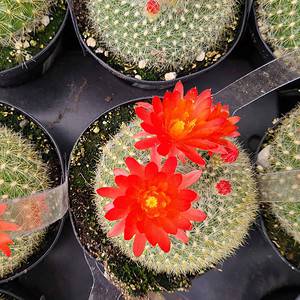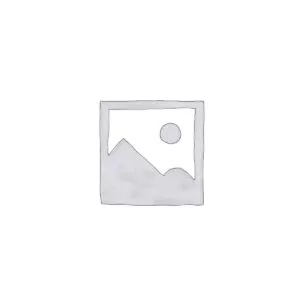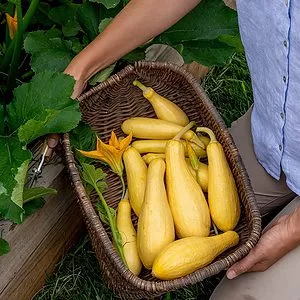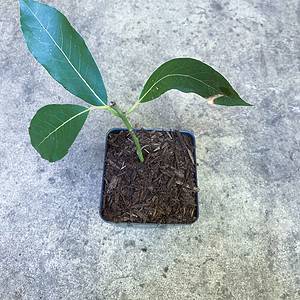No products in the cart.
Gardening is rewarding, and for beginners to professionals, you keep hearing words like low maintenance plant and easy to care for indoors and outside.
Still, it takes discipline, but it is rewarding to see your plants grow. Yet, there is no such thing as easy; it depends on the species you care for. Nonetheless, you need not fret as we’re here to help manage the Syngonium chiapense if you are an Aroid collector.
The best part is it is an unusual Aroid and can become part of your indoor plant collection to thrive.
More About Syngonium Plants

As a plant parent, it helps to have information about the species inside your home to provide the best tender loving care. One thing is for sure the Syngonium chiapense stands out from all the other Syngonium plants.
Why, as many people confuse the existing Chiapense plant with the Philodendron and Monstera plants? These house plants are native to Mexico, and it is a climbing plant that also needs climbing support.
Thus, it helps to provide your plant with a wet wall or totem to crawl along. Compared to other house plants like Philodendron, a standout feature is the lush green leaves found in two species, round or heart-shaped.
Furthermore, it has faster growth than the other plants outdoors and rarely suffers leaf burn. The foliage has a glossy to rubbery texture, and when kept clean, it looks fabulous. It also grows bushier as it has a narrower internodal spacing.
The size Syngonium leaves grow depends on the growing conditions, but in the wild, they can reach up to 27 inches long. While we will not say it is easy to grow tropical plants, when you have some help, it can become a breeze when caring for it indoors.
Syngonium Chiapense Care Tips

The care indoors is similar to other Aroids; they thrive in acidic soil in terracotta pots with enough drainage holes. With the right lighting, it can also grow as a beautiful tree wrapped around a tree. The heart-shaped leaves give a beautiful display anywhere.
You can even place your Syngonium plants in hanging baskets. But it is not a pet-friendly plant.
Tropical Indoors Plants Thrive in Well-Drained Soil
The mid-size Syngonium grows best with a burlap-wrapped pole in moist soils, but it needs to drain well. So, you can mix up some ingredients to help retain moisture.
You can mix some vermiculite with sphagnum peat moss or mix either one with some coconut coir. Then to help improve drainage, you can use either grainy sand, leca, or perlite. Or you can use a potting mix with perlite added.
The potting mix works well for most indoor plants in the Arid cultivar. Alternatively, you can add some natural biodegradable peanuts to the soil as compost.
Lower Light Conditions Even If It Rarely Suffers Leaf Burn

The plant grows well in a round growers’ pot placed in part sun to moderate shade, making for a wonderfully tropical accent to any living space.
While you can keep Syngonium chiapense in a sunny area, we do not recommend this for too long. It is best to keep it in front of a large window with some sheer curtains to receive lower but still bright light.
Keeping your plant in full sun, it will experience leaf burn. Another helpful thing is to rotate your plant to prevent it from reaching out to the light. The rule is to keep it in a well-lit space to thrive.
Watering Chiapense Arrowhead Syngonium Plants
For a complete appearance of this gorgeous tropical plant, as with both Philodendrons and Monstera plants, it helps to provide them with a mossy post. These plants thrive in humidity and moist soils.
Hence, this slowly moving creeping plant needs regular watering, depending on the environment. We recommend not allowing the soil to dry out but remaining moist. Neither do you want the soil to be wet as it can kill your plant resulting in root rot?
For this reason, the finger soil test best determines if the top inch feels dry to the touch before watering your plant. A fact is that many species in the Aroid genus prefer moist but not soggy soil.
Allow the water to drain from the holes and remove it from the catch saucer. You will find during the growing season, depending on the temperatures, you may need to water more. Still water less in winter months.
The reason is that your favorite hanging planter is dormant at this time.
Temperature & Humidity
If you want to grow your new Chiapense Arrowhead Syngonium outdoors, it is best grown in the USDA hardiness zones 9b to 11. Your plant needs at least 70% to 85% sunlight, but filtered sun is best.
Nevertheless, when grown on the northern side, bringing your plant friend indoors during winter is best. Of course, the best place to grow it on a patio is in zones 10 to 12 but still, bring it indoors when cold outside.
But before you plant your Syngonium species outside, it helps to remember that these plants grow under 20% to 40% shade cloth. Hence, it helps to acclimate your plant to the new environment.
Doing this helps to avoid stress before you plant it and keeps those vibrant leaves looking great. Furthermore, your plant friend prefers high humidity levels and temperatures in mild climates.
Fertilize Sparingly

When it comes to feeding your Chiapense Arrowhead, do it sparingly. You can do this tri-annually using a slow-release product. Preferably place the fertilizer six inches away from the base.
If you use a liquid fertilizer, we recommend watering your plant well before the time. Another concern is that heavy salts from your cheaper fertilizers can damage the root system and possibly kill it.
Repotting and Pruning Your Syngonium Chiapense
As the Syngonium chiapense is a robust grower, it will need regular repotting. Spring and summer are ideal for transplanting potted juvenile state or new Chiapense Arrowhead Syngonium plants.
Alternatively, you can repot your plant six weeks before winter arrives. Again, we recommend a pot size one to two times larger. When repotting, you can replenish the soil and ensure it has enough drainage holes.
Compared to most plants in the Syngonium genus, it needs some pruning to prevent the vibrant leaves from resulting in an ugly flop effect. You can also trim damaged and dying leaves to help your new plant grow.
You can do this easily by pinching off the lower leaves to new growth to help reshape your plant.
-
Free Shipping$34.95Sold By: CKK PRODUCTS LLC
$49.95In stock
Persimmon Tree seedling (American) seedling
Rated 5.00 out of 5 based on 1 customer rating00Sold By: CKK PRODUCTS LLC -
$9.99Sold By: BubbleBlooms
In stock
Aloe haworthioides, Very Full Lace aloe, big haworthia in 4 inch pot, very special limited supply rare plant 4″
Only 13 available and it’s in 1 people’s basketRated 4.81 out of 5 based on 279 customer ratings00Sold By: BubbleBlooms -
$8.99 – $12.99Sold By: Succulent Oasis
In stock
Scarlet Crown or Notocactus Haselbergii | A lovely cactus that produces amazing blooms
Rated 4.84 out of 5 based on 352 customer ratings16Sold By: Succulent Oasis -
Free Shipping$13.95Sold By: SunSoul Plants
$20.95In stock
Callisia Fragans, ‘Family Doctor’ live plant – in 4″ pot, free shipping
Rated 4.87 out of 5 based on 98 customer ratings00Sold By: SunSoul Plants
Propagating Syngonium Chiapense
Syngonium chiapense is an excellent plant to propagate using different methods than other house plants.
You can use water for soil propagation with a stem cutting or division, which produces enormous plants to grow indoors and outside.
The best time to do this is in spring and summer. Here we will discuss all three methods so you can choose which one works best for you.
Water Propagation

Take a sterilized knife and cut a stem cutting from your parent plant. Take stem cuttings with two to three nodes close to each other. Also, include a set of leaves at the top.
Next, remove the lower leaves, place the cutting in a glass with water, and place it in bright indirect light. But avoid direct sunlight.
You can change the water twice a week and scrub the container before adding fresh water.
New roots should start developing from the nodes in a week or so. Once a few roots are present, you can transplant them into potting soil in a cute pot.
Soil Method
Get your hands dirty using the same method: take stem cuttings from the mother plant.
Place a well-draining soil mix using equal parts sphagnum moss, potting soil, and some orchid bark.
Place the cuttings in the soil and water, then place them in bright indirect light, ensuring the soil stays moist.
This method is great if you gift friends and family this gorgeous plant. You can invest in affordable recyclable deep pots and kraft paper wrapped around the pot once it develops new roots and leaves.
Division
The division method is ideal as you can cut through the root system, but it is not always easy and is not the most popular choice. The reason is that mature plants have thick twisted growth, and untangling them is difficult.
Nonetheless, it is ideal when your plants are getting too big and handy to do. All you need is to use a clean knife to divide the root clump into different pieces. Then pot them up and water them as usual.
Syngonium Chiapense Similar Plants
Both Philodendrons and Monstera plants are closely related in resemblance and care but do not belong to the same genus. But there are other plants in the family you can grow with your Syngonium chiapense.
Syngonium podophyllum
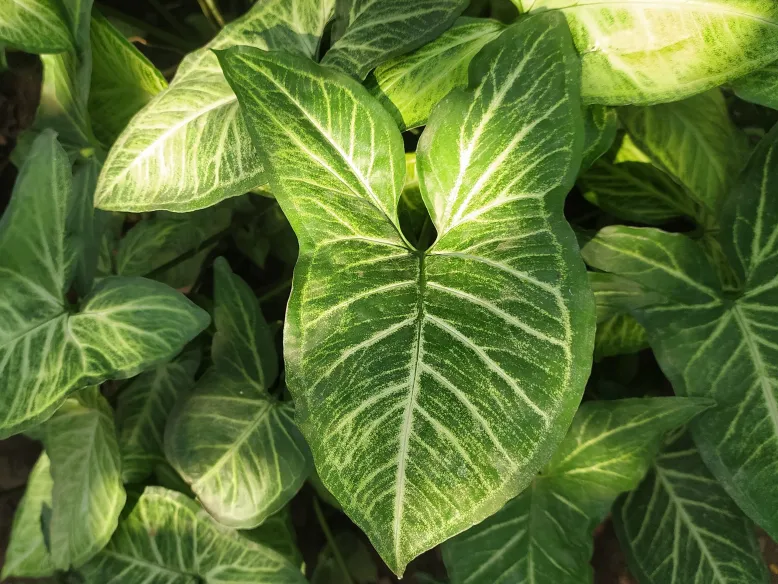
It is a popular Syngonium known as the Arrowhead Vine or Goosefoot. It is an evergreen native to Latin America, similar to the Syngonium chiapense. Compared to most plants in this genus, it has arrow-shaped leaves instead of heart-shaped ones.
Syngonium macrophyllum

The Syngonium Frosted Heart is popular and has frosty coloration on the foliage. The foliage is thicker and rounder with a rubber texture as it matures. When in bloom, it has pink flowers.
Syngonium erythrophyllum
 Syngonium erythrophyllum @danjones
Syngonium erythrophyllum @danjones
It is a rare plant known as the Red Arrow and looks gorgeous in hanging baskets. The arrow-shaped leaves have a waxy texture in a dark green color with a maroon or red underside.
Syngonium Chiapense Common Diseases And Pests
While these indoor plants thrive well, the Syngonium chiapense remains as susceptible to pests and disease as most plants. These include spider mites, mealybugs, aphids, and root rot from overwatering.
Frequently Asked Questions
The beautiful tree wrap plant prefers loose soil and is not root-bound as the growth will slow.
The mid-size Syngonium stretches out as it vines when you provide it with a trellis, but if you want it to grow bushy, you can place them in hanging baskets without support.
If you want your plant to grow faster, provide your plant with a support pole to the vine and reach out to the light. Another added benefit is that the Syngonium chiapense can grow as ground cover.
Yes, Syngonium chiapense is considered a rare plant. Syngonium chiapense stands out for its unique and attractive foliage, which features dark, matte green, and heart-shaped leaves with prominent silver-white veins.
Whether you want to buy, sell, or simply reach out to other plant enthusiasts, Plantly is the right place to be!
-
Free Shipping$394.79Sold By: BONSAI WORLD LLC
In stock
Variegated Hawaiian Umbrella Bonsai Tree Root Over Rock
Only 1 available and it’s in 1 people’s basketSold By: BONSAI WORLD LLC -
Free Shipping$9.99 – $18.99Sold By: Thor's Backyard Nursery
In stock (can be backordered)
Agave Blue Glow | HUGE BULK SALE!!! (Read Description)
Rated 4.89 out of 5 based on 53 customer ratings01Sold By: Thor's Backyard Nursery -
$8.96Sold By: CZ Grain
In stock
10 Saffron Summer Squash Seeds for Planting (10 Seeds)
Rated 4.60 out of 5 based on 156 customer ratings00Sold By: CZ Grain -
Free Shipping$24.97Sold By: Grow Your Own Food Nursery
$29.97In stock
bay leaf tree
Only 2 available and it’s in 1 people’s basketSold By: Grow Your Own Food Nursery


